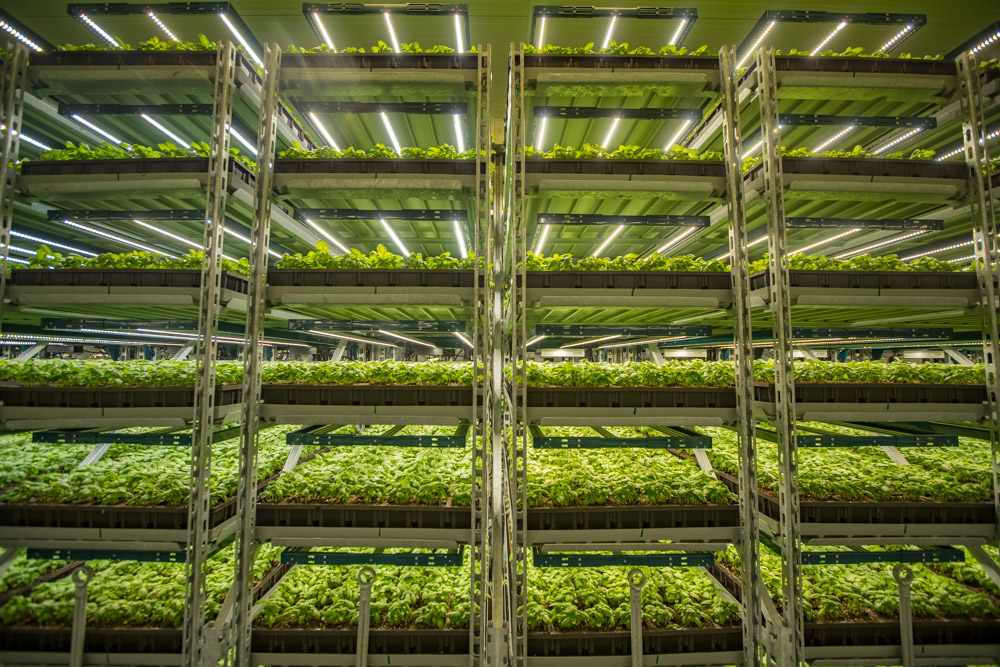Indoor Agriculture Energy Solutions Conference Connects Policymakers, Utilities, Supply Chain and Producers to Shape an Energy Efficient Future for Controlled Environment Agriculture
At recent IAES event in San Diego, cultivation and energy-efficiency experts gathered to discuss better growing practices and a roadmap for resource-efficient indoor agriculture
SAN DIEGO (March 17, 2020) – 175 energy-efficiency experts and industry leaders gathered recently to shape the future of energy policies and utility programs affecting indoor agriculture in the U.S. and beyond at this year’s Indoor Agriculture Energy Solutions 2020 conference, hosted by Resource Innovation Institute, in partnership with D+R International. The three-day summit in February initiated a dialogue around policy and best practices for controlled environment agriculture for a range of growing environments and crops. Its participants also explored the regulatory concerns affecting indoor growers today and what the future might hold.
“Indoor agriculture is not only changing the face of food and medicine production, it is reshaping the energy and climate dialogue,” said Derek Smith, Executive Director of Resource Innovation Institute. “This initial IAES gathering created the first opportunity for the full set of market actors to come together to assess the efficiency-related policies, programs and practices to date, and chart a collaborative path forward.”
In the keynote session, Kay Doyle of the Massachusetts Cannabis Control Commission discussed her state’s decision-making process that led to the world’s first comprehensive law on managing energy use in indoor grow environments. And she stressed the importance of industry leaders using their voice to guide future energy and environmental regulations for indoor agriculture in other states, too.
“You have valuable insight and perspective,” Doyle told IAES participants, adding that even though today’s stakeholders are better at talking among themselves about energy conservation efforts, they still need to make sure their voices are getting through to states’ regulatory and oversight agencies, too.
“Let’s find a way to better engage with one another,” Doyle said. “Because I want to hear a lot more information coming to the regulators in the 2020 round. We have other states coming online [with legalization], and you have an opportunity to get in on the ground floor with all these states considering legalizing cannabis and doing it in an energy responsible way. And the only way they’re going to be able to do that sensibly and in a data-driven way is if they hear from you.”
Stakeholders discussed the challenges of establishing informed policies and regulations in the absence of baseline data comparing energy and water impacts across a variety of forms of agriculture. A policy panel, moderated by Jen Hensley of the Sierra Club, discussed how states have a variety of energy and climate objectives, which may not be compatible with the economic and social interests driving indoor cultivation of cannabis and other crops.
Brian Anderson, a Massachusetts-based architect with Anderson Porter Design also serves as the Chair of the Facilities Design Committee of the National Cannabis Industry Association. “We serve cultivation customers in both cannabis and non-cannabis controlled environments…the nuance in the language in these policies is really important in driving the efficiency and business outcomes we all seek,” Anderson said.
Molly Graham, senior program manager with the Midwest Energy Efficiency Alliance (MEEA), has been tracking policy changes in medicinal and recreational cannabis in the Midwest. MEEA has been an advocate for energy saving technologies and energy management plans for cultivation centers and provided technical assistance as Illinois drafted language to become the first state to place energy requirements at the outset of regulating its adult use market. Molly added, “As states regulate cultivation energy use, we believe utility incentives are important because of the nascent stage of the market and high incremental cost. So we are advocating that they be paired with minimum standards of performance, such as those verified by the DesignLights Consortium.”
The event wrapped up with a discussion about California’s emerging Title 24 energy code proposals for “controlled environment horticulture,” which will establish a blueprint for regulating the energy and climate impacts of agriculture for all governments globally. Reputable codes and standards have been evolving and will continue to change to address indoor grow environments, which have yet to be officially recognized by international building codes.
“Energy codes set the minimum floor of efficiency performance across a range of building types, and California often leads the way globally,” said Jen Amann, Buildings Program Director for American Council for an Energy-Efficient Economy (ACEEE). “They’re a key piece of the market transformation puzzle, and they’re proven to save companies money.”
“It’s very helpful to gain the real-time input of a variety of market actors. This conference catalyzed critical dialogues at a key moment in the Title 24, Part 6, stakeholder engagement process,” said Kyle Booth, Energy Solutions, stakeholder lead for the Codes & Standards Enhancement Team funded by California’s six major utilities.
“We are building a revolutionary local food production model and are hyper-focused on minimizing our energy and carbon footprint,” said Grant Vandenbussche of Fifth Season, a Pittsburgh-based commercial-scale indoor vertical farm employing robotics, artificial intelligence, data analysis and solar technologies. “These early actions by governments and utilities are meaningful as we pursue those goals, which is why we’re committed to openly sharing our energy usage in a helpful manner.”
California’s actions will apply not only to warehouses, but also to greenhouses, which are becoming increasingly sophisticated with horticultural lighting that supplements sunlight, as well as control systems to manage light levels, temperature and other growing conditions.
“We agree with Resource Innovation Institute that governments should be making decisions based on good data,” said Erico Mattos of the Greenhouse Lighting and Systems Engineering (GLASE) Consortium, based at Cornell University. “So we are working with RII to align the data points in the upcoming National Greenhouse Database and Cannabis PowerScore with the interests of CEA growers and utility companies. That way we will all be empowered to map our way to the most efficient cultivation approaches for various crops and growing environments.”
For more information or to schedule an interview with Resource Innovation Institute, contact Shawna Seldon McGregor at shawna@themaverickpr.com or 917-971-7852.
Resource Innovation Institute: Advancing Resource Efficiency to Create a Better Agricultural Future
Resource Innovation Institute (RII) is a non-profit organization whose mission is to advance resource efficiency to create a better agricultural future. Founded in 2016 in Portland, OR, USA, RII’s Board of Directors includes the American Council for an Energy Efficient Economy (ACEEE), a former Energy Policy Advisor to two Oregon governors, a former board member of the US Green Building Council and leading cannabis industry players. The organization has unique expertise on intelligence, policy and education related to energy use in controlled environment agriculture (CEA). Its Cannabis PowerScore benchmarking tool is backed by the world’s largest dataset on CEA energy use. RII’s Technical Advisory Council is the leading multi-disciplinary body assessing the environmental impacts and best practices associated with cultivation resource issues. In 2018, RII advised the Commonwealth of Massachusetts on the establishment of the world’s first cannabis energy regulations, and it is now advising Illinois, California and other governments on CEA-related energy policies. RII’s Efficient Yields cultivation workshops are the only grower-led, non-commercial venues for the exchange of resource efficient cultivation best practices. RII is funded by utilities, foundations, governments and leading members of the supply chain serving CEA, from LED manufacturers to HVAC engineers. Visit our website at ResourceInnovation.org. Follow us on LinkedIn, Facebook, Twitter and Instagram.



